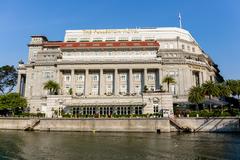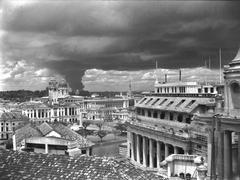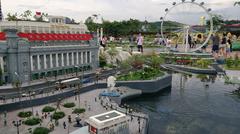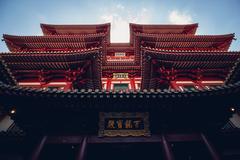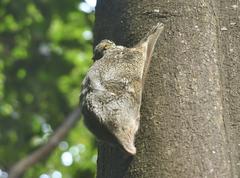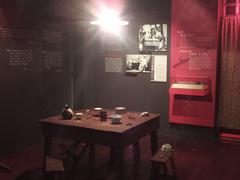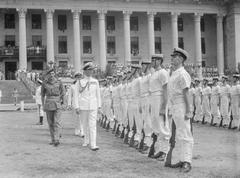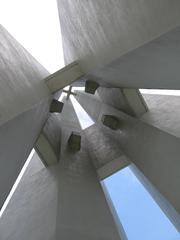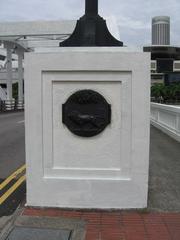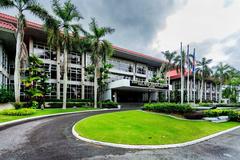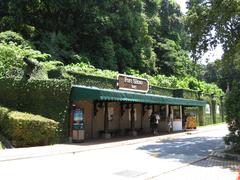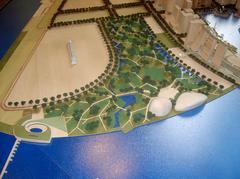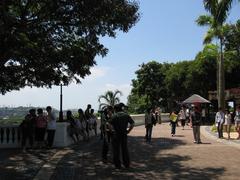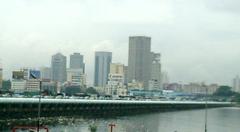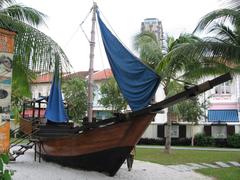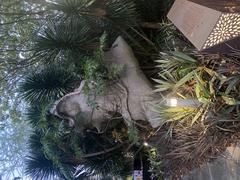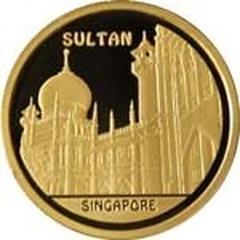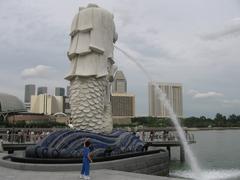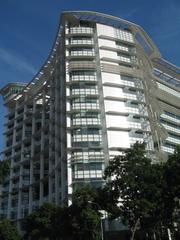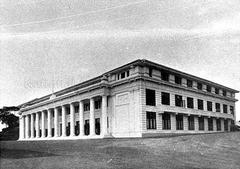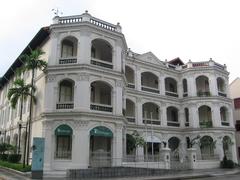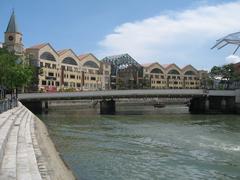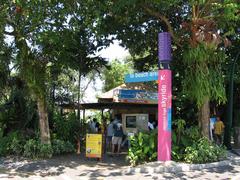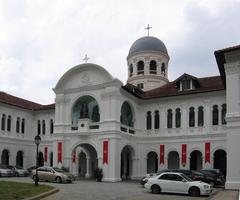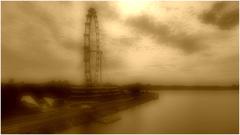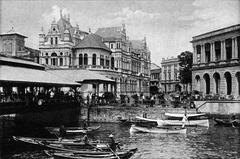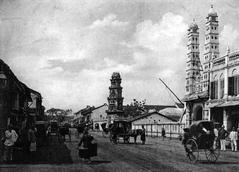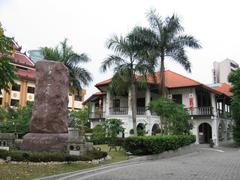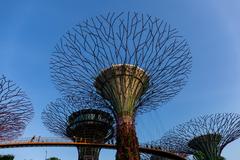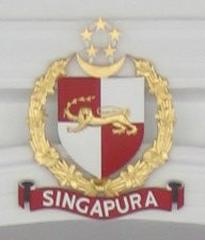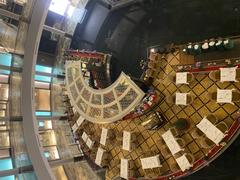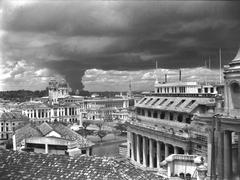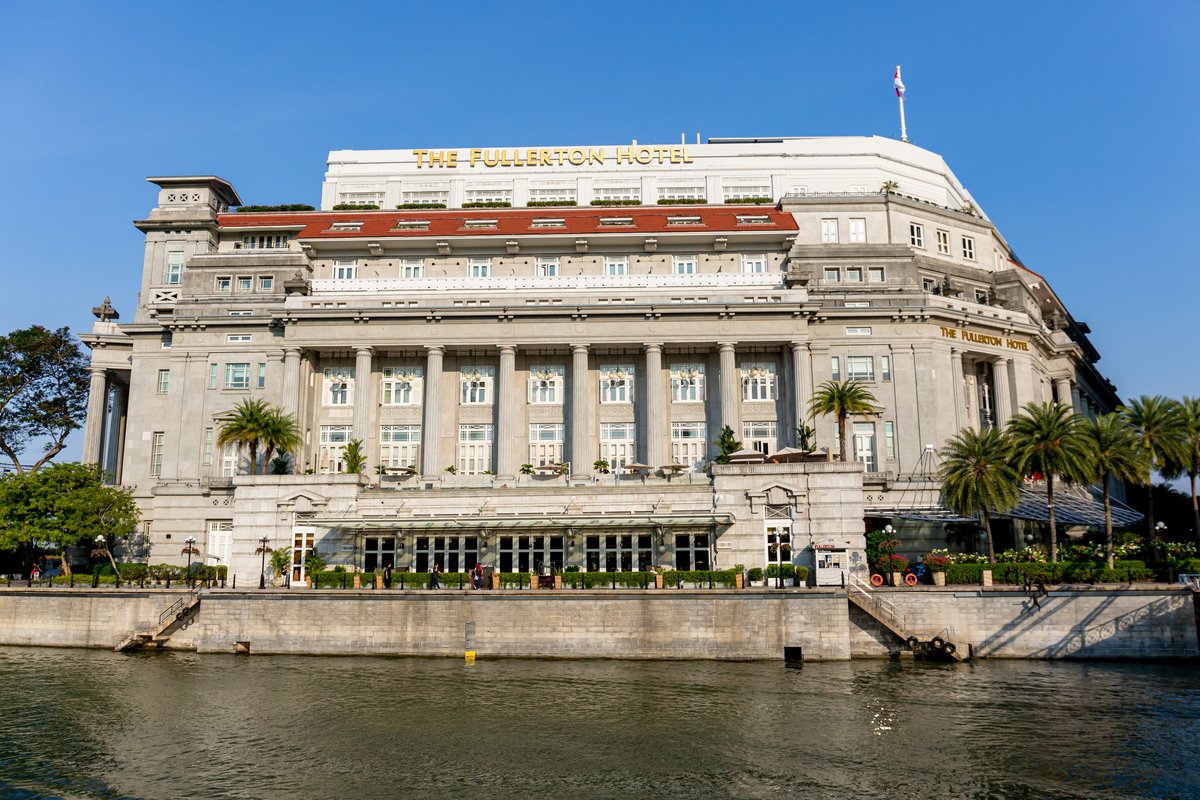
The Fullerton Hotel Singapore: Visiting Hours, Tickets, and Visitor Guide
Date: 14/06/2025
Introduction
The Fullerton Hotel Singapore stands as a majestic emblem of the city-state’s colonial heritage and modern sophistication. Completed in 1928 as the General Post Office, the building is an architectural treasure that has witnessed Singapore’s transformation from a maritime trading post to a thriving global city. Today, the Fullerton is a luxury hotel and a designated National Monument, offering visitors not only world-class hospitality but also an immersive journey through Singapore’s rich history and culture (Wikipedia). This guide covers everything you need to plan your visit, from practical information on visiting hours and tickets to highlights of its architectural and cultural significance.
Table of Contents
- Colonial Origins and Early Significance
- The General Post Office and Civic Functions
- Wartime Roles and Post-War Symbolism
- Civic and Governmental Use (1950s–1990s)
- Transformation into a Luxury Heritage Hotel
- National Monument Status and Ongoing Heritage Initiatives
- Visiting Hours, Tickets, and Guided Tours
- Architectural Features and Conservation Highlights
- Cultural Significance and Experiences
- Nearby Attractions and Travel Tips
- Guest Experience and Amenities
- Frequently Asked Questions (FAQ)
- Conclusion
- References
Colonial Origins and Early Significance
Commissioned in 1924 to commemorate the centenary of the British colony, the Fullerton Building was named after Robert Fullerton, the first Governor of the Straits Settlements (Wikipedia). Designed by Major P.H. Keys of Keys & Dowdeswell, it was completed in 1928 and rapidly became a central fixture at the mouth of the Singapore River—then the city’s commercial heart. Its grand neoclassical style, marked by imposing Doric columns and a stately façade, embodied the aspirations of colonial Singapore, standing at “Mile Zero,” from where all distances in Singapore were measured.
The General Post Office and Civic Functions
The Fullerton Building was conceived as a multi-purpose civic hub. Its lower floors housed the General Post Office (GPO), the city’s communications nerve center, with vast postal halls and a 90-meter-long curved service counter. A 35-meter tunnel beneath Fullerton Road facilitated mail transfer to the docks, highlighting its maritime importance. The building also housed the Singapore Club and the Exchange Room and Reference Library, serving as a meeting point for the colonial elite and business community. The Fullerton Lighthouse, once atop the building, guided ships safely into harbor (Wikipedia).
Wartime Roles and Post-War Symbolism
During World War II, the Fullerton Building was transformed into a makeshift hospital for wounded British soldiers and later served as the headquarters of the Japanese military administration. The fourth-storey lounge—now preserved—became historically significant as the site where the British Governor learned of Singapore’s impending surrender (Wikipedia). Post-war, the building’s lighthouse and elegant façade became enduring symbols of Singapore’s waterfront.
Civic and Governmental Use (1950s–1990s)
After WWII, the building remained central to Singapore’s civic life. It hosted rallies for independence in the 1960s and later became the Inland Revenue Authority’s headquarters, while the GPO continued until 1996. Despite internal alterations for government use, the façade remained intact. In 1997, recognizing its historic and architectural value, the building was gazetted for conservation (Wikipedia).
Transformation into a Luxury Heritage Hotel
In 1997, Sino Land (Hong Kong) Company Ltd acquired the property, launching a S$300 million restoration to convert it into a luxury hotel. Restoration efforts carefully preserved the neoclassical façade, Shanghai plaster panels, and timber-framed windows while modernizing interior spaces. The adaptive reuse project was lauded for its sensitivity and received an architectural heritage award from the Urban Redevelopment Authority in 2001 (Wikipedia). Today, the hotel features 400 rooms and suites, many with river or bay views (Luxury Travel Diary).
National Monument Status and Ongoing Heritage Initiatives
Designated as Singapore’s 71st National Monument in 2015, the Fullerton Hotel is recognized for its historical, architectural, and cultural significance (Wikipedia). The hotel actively promotes its heritage through complimentary guided tours, curated exhibitions, and community engagement programs (Fullerton Experiences).
Visiting Hours, Tickets, and Guided Tours
- Public Areas: Open daily from 9:00 AM to 9:00 PM. Hotel guests have 24/7 access to facilities.
- Heritage Gallery: 9:00 AM to 6:00 PM.
- Dining Venues: Generally 7:00 AM to 10:30 PM, hours may vary by restaurant.
- Admission: Free for public areas, Heritage Gallery, and restaurants. Room reservation is required for overnight stays.
- Guided Heritage Tours: Complimentary for hotel guests and visitors. Advance booking via the official website or concierge is recommended. Select workshops and special events may require a nominal fee.
The hotel is fully accessible, with ramps, elevators, and accessible guest rooms.
Architectural Features and Conservation Highlights
The building exemplifies neoclassical grandeur, with 20-foot Doric columns, a symmetrical façade, and meticulously restored details such as marble staircases and ornate cornices (Virtuoso). The sunlit atrium, once the GPO’s heart, is now a grand gathering space. Heritage Rooms retain period features like high ceilings and tall windows. The only surviving original interior—the fourth-storey lounge—features a barrel-vaulted, coffered ceiling. The hotel’s conservation is a model for adaptive reuse in Singapore.
Cultural Significance and Experiences
Living Heritage and Community Engagement
The hotel’s site has been a focal point for trade, governance, and community gatherings since the 19th century. Today, The Fullerton Hotel is a cultural beacon, celebrating Singapore’s multicultural legacy with art exhibitions, heritage workshops, and culinary events. Highlights include:
- Traditional Afternoon Tea: Served in The Courtyard, blending British and local Peranakan flavors.
- Cultural Workshops: Peranakan costume experiences, art workshops, and floral watercolour classes (Fullerton Experiences).
- Art and History Exhibitions: Regularly showcase Singaporean and international artists.
- Special Events: Participation in citywide festivals and National Day celebrations (The Urban List).
The Fullerton Heritage Precinct
The hotel anchors the Fullerton Heritage Precinct, a district of restored colonial-era buildings such as The Fullerton Waterboat House and Clifford Pier, offering further insights into Singapore’s urban evolution (Singapore Playground).
Nearby Attractions and Travel Tips
Within walking distance:
- Merlion Park (5 mins): Iconic symbol of Singapore.
- Asian Civilisations Museum (3 mins): Southeast Asian history and culture.
- Victoria Theatre and Concert Hall (5 mins): Historic performing arts venues.
- National Gallery Singapore (10 mins): Southeast Asia’s largest art collection.
- Boat Quay and Clarke Quay (10–15 mins): Dining and nightlife.
Transport:
- MRT: Raffles Place station (400m).
- Taxi: 20–30 mins from Changi Airport; SGD 25–35.
- Bus: Numerous lines serve Fullerton Square.
- Walking/Biking: Scenic routes along the river and Marina Bay.
- River Cruises: Board nearby for a unique view of the city (Singapore Trip Guide).
Tips:
- Use an EZ-Link card for public transport.
- Book heritage tours in advance.
- Dress smart casual for restaurants.
Guest Experience and Amenities
Accommodation: 399 rooms and suites with modern comforts and heritage accents. Many offer river or bay views (The Hotel Journal). Suite guests enjoy exclusive lounge access and airport transfers.
Dining:
- Town Restaurant: International buffets by the river.
- Jade: Refined Cantonese cuisine.
- The Courtyard: Afternoon tea.
- Lighthouse Restaurant & Rooftop Bar: Italian fare with panoramic views.
Wellness:
- Outdoor infinity pool overlooking the city.
- Award-winning Fullerton Spa.
- 24/7 fitness centre.
Family-Friendly: Children’s amenities, babysitting, and interconnecting rooms.
Business & Events: Meeting rooms, banquet spaces, business centre, and modern AV facilities.
Accessibility: Fully accessible with ramps, elevators, and accessible rooms.
Safety: 24-hour security, in-room safes, lifeguards, and SG Clean certification.
Frequently Asked Questions (FAQ)
Q: What are Fullerton Hotel Singapore’s visiting hours?
A: Public areas and the Heritage Gallery are open daily from 9:00 AM to 9:00 PM. Hotel facilities are open 24/7 for guests.
Q: Is there an entry fee?
A: Entry to public spaces, Heritage Gallery, and restaurants is free. Guided tours and workshops may require advance booking.
Q: How do I book a tour?
A: Reserve via the Fullerton Experiences page or at the concierge.
Q: Is the hotel accessible for the disabled?
A: Yes, with accessible rooms and public facilities.
Q: What are some nearby Singapore historical sites?
A: Merlion Park, Asian Civilisations Museum, Victoria Theatre, National Gallery, and Boat Quay.
Conclusion
The Fullerton Hotel Singapore is more than just a luxury destination—it is a living monument encapsulating the city’s history, culture, and architectural excellence. Whether you’re a history enthusiast, architecture lover, or a traveler seeking a vibrant cultural experience, the Fullerton offers a unique journey into Singapore’s past and present. Plan your visit, join a heritage tour, and explore the stories that have shaped one of the nation’s most iconic landmarks. For the latest information on visiting hours, tours, and events, visit the official Fullerton Hotel Singapore website.
References
- Wikipedia: The Fullerton Hotel Singapore
- Luxury Travel Diary: Review of The Fullerton Hotel Singapore
- Fullerton Experiences – The Fullerton Hotels Official Website
- Virtuoso: The Fullerton Hotel Singapore
- Singapore Playground: Uncover the Rich History of The Fullerton Hotel Singapore
- Singapore Trip Guide: Cultural Exploration Around The Fullerton Hotel Singapore
